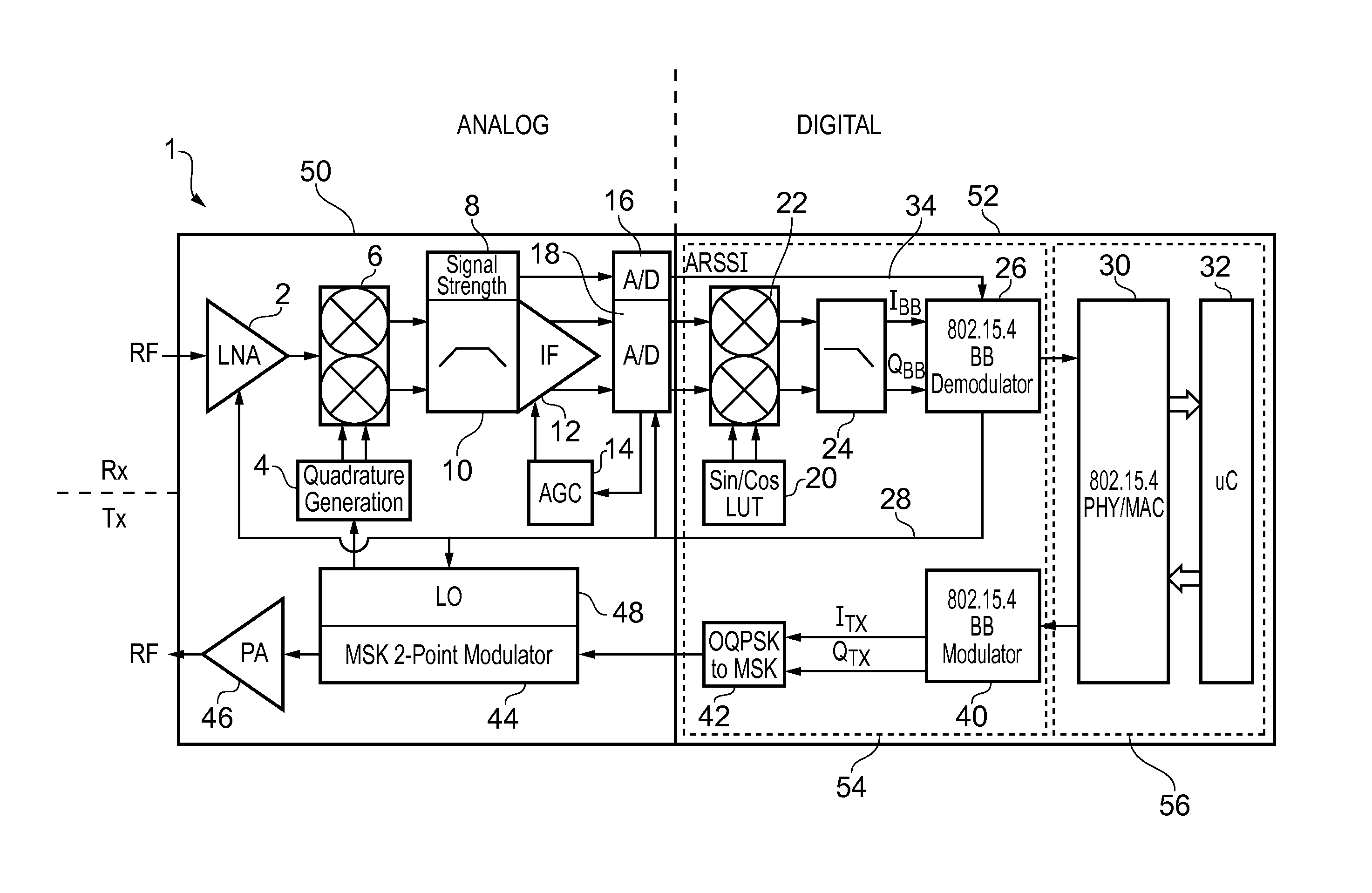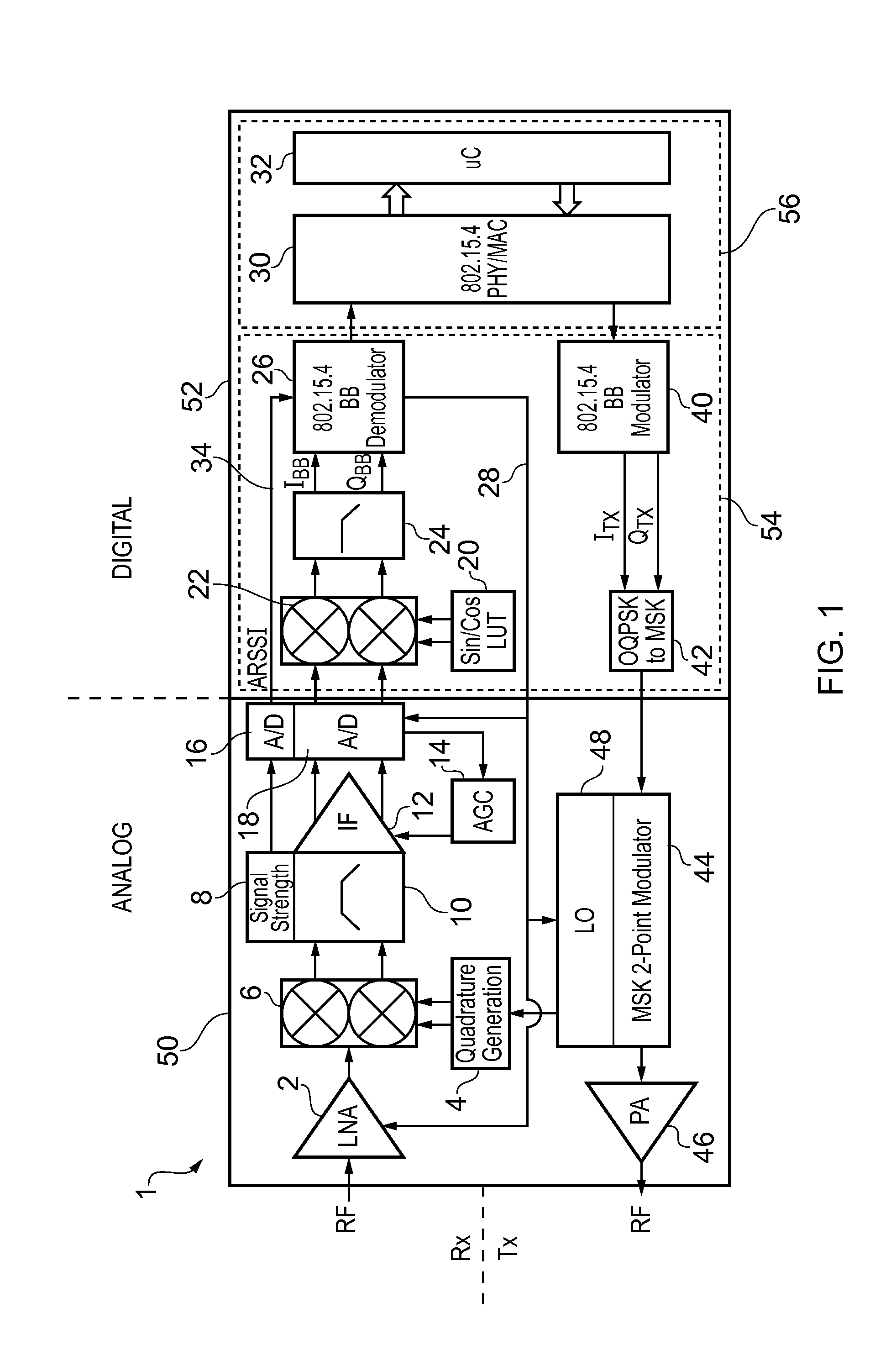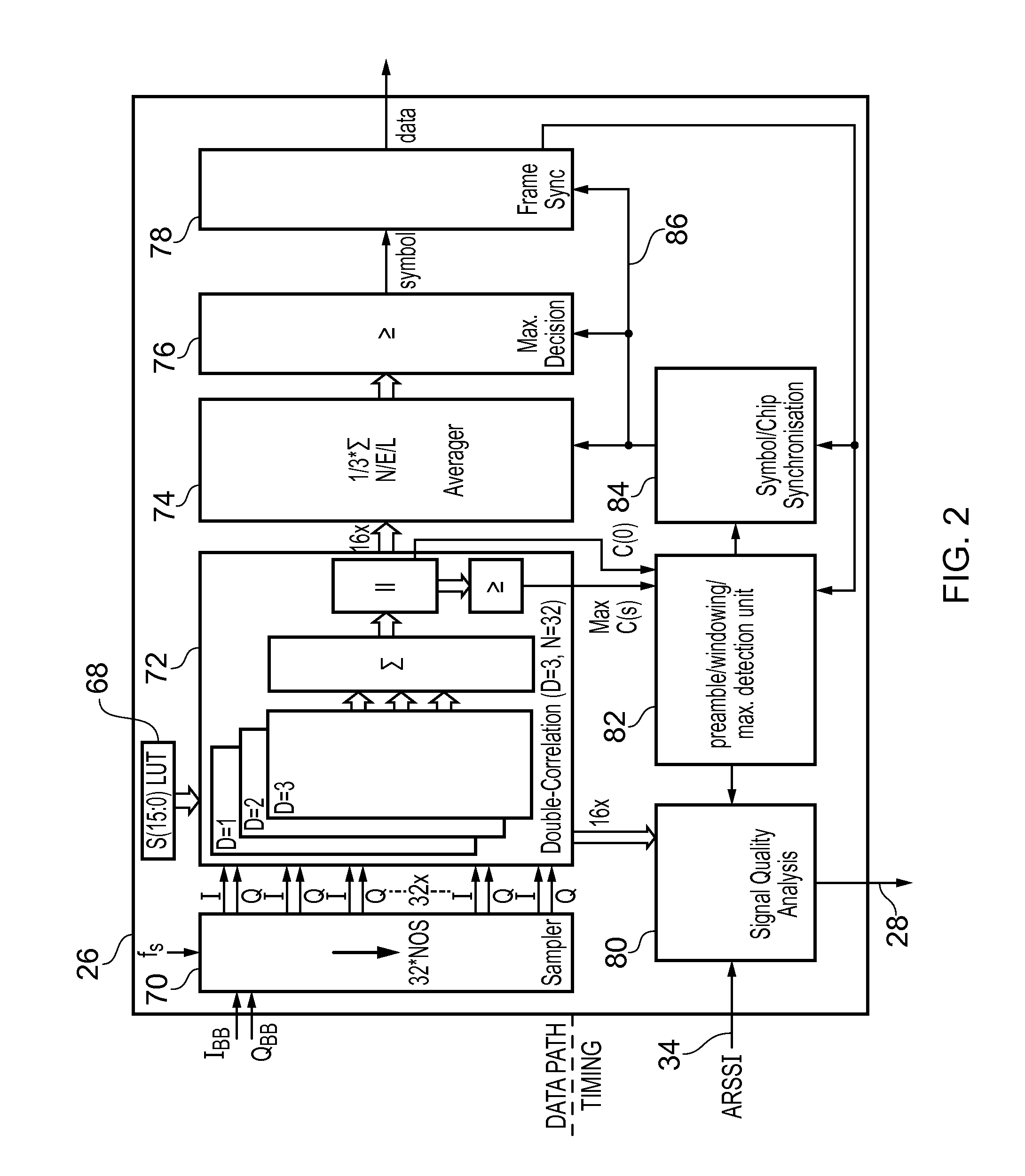Wireless receiver
a receiver and wireless technology, applied in the direction of pulse automatic control, radio transmission, electrical equipment, etc., can solve the problem of achieving 5 db of noise improvement with a very low circuit power penalty
- Summary
- Abstract
- Description
- Claims
- Application Information
AI Technical Summary
Benefits of technology
Problems solved by technology
Method used
Image
Examples
first embodiment
FIG. 1 shows a transceiver 1 according to the invention. The transceiver 1 shown in the figure is an integrated system. The only required external components are an antenna, an oscillator crystal and a power supply decoupler. That is to say the transceiver may be implemented on one chip, i.e. in a single integrated circuit. However, it will be appreciated that although desirable for cost reasons, a single chip solution is not a technical necessity.
The transceiver 1 has a functional split into two parts, namely a receiver Rx and a transmitter Tx, as well as a hardware split into two parts, namely an analog unit 50 and a digital unit 52. The analog unit 50 provides a radio frequency (RF) front end for the transmitter and receiver. The digital unit 52 comprises a digital baseband (BB) processor 54 and a system control unit 56. Referring to FIG. 1, the receiver components 2, 6, 10, 12, 18, 22, 24, and 26 are arranged in the upper part of the drawing with the signal path from left to rig...
second embodiment
FIG. 6 shows a transceiver 1 with an alternative system architecture according to the invention.
The architecture of the second embodiment has many common features with that of the first embodiment and the overall structure will be apparent by comparing FIG. 6 with FIG. 1. The same reference numerals are used in FIG. 6 as in FIG. 1 for components which are the same, or have a correspondence in terms of their high level function.
The transceiver 1 has a functional split into two parts, namely a receiver Rx and a transmitter Tx, as well as a hardware split into two parts, namely an analog unit 50 and a digital unit 52. The analog unit 50 provides an RF front end for the transmitter and receiver. The digital unit 52 comprises a digital baseband processor 54 and a system control unit 56. Referring to FIG. 6, the receiver components 2, 90, 92, 88, 18 and 26 are arranged in the upper part of the drawing with the signal path from left to right, and the transmitter components 46, 104, 102, 10...
PUM
 Login to View More
Login to View More Abstract
Description
Claims
Application Information
 Login to View More
Login to View More - R&D
- Intellectual Property
- Life Sciences
- Materials
- Tech Scout
- Unparalleled Data Quality
- Higher Quality Content
- 60% Fewer Hallucinations
Browse by: Latest US Patents, China's latest patents, Technical Efficacy Thesaurus, Application Domain, Technology Topic, Popular Technical Reports.
© 2025 PatSnap. All rights reserved.Legal|Privacy policy|Modern Slavery Act Transparency Statement|Sitemap|About US| Contact US: help@patsnap.com



